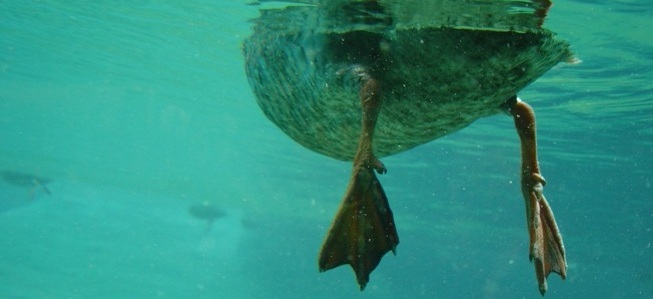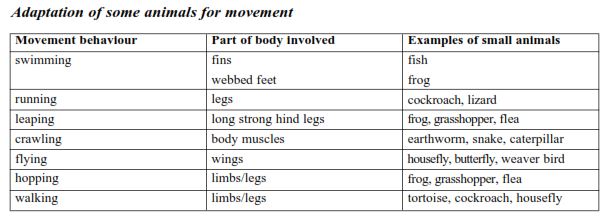The ways in which various animals are adapted for movement are:
1. Some animals have wings for flight and to ensure they fly smoothly through the air with very little resistance, their bodies have a STREAMLINED shape that allows them to cut through air for example birds, bats and insects.
2. Some animals have FINS and TAILS to allow them to swim.
To ensure they swim smoothly through the water with little or no resistance, their bodies have a STREAMLINED SHAPE
Examples of such animals are fish and whales.
3. Some animals have Webbbed feet that enable them to thrush through water to gain forward movement.
In addition their bodies also have a streamlined shape to allow them move through water easily.

Examples of such animals are ducks and frogs.
All living things would want to stay alive.
Just like a person would run away from a charging fierce dog to protect his/her life, small animals protect themselves from injury or harm by behaving in certain ways.
The way an organism behaves to stay alive is called Protective behaviour.
In the face of danger from enemies, what do you think would be the protective behaviour of a cockroach, lizard, housefly, weaverbird, wasp, spider, safari ant, snake, centipede, earthworm millipede, bee, snail or tortoise?
Therefore, movement and protective behaviours are adaptations of small animals in order to survive in the environments in which they live in.


The video below shows a lizard running